France’s countryside harbors hundreds of villages that time seems to have forgotten, where cobblestone streets wind between medieval buildings and local bakeries still open at dawn to the sound of church bells. These hidden gems exist far from the tourist buses that crowd places like Mont-Saint-Michel or Carcassonne, preserving authentic French village life that feels like stepping into a living history book.
Beyond the famous wine regions and postcard-perfect Provence lies a network of villages that showcase France’s diverse regional character and architectural heritage. Here is a list of 20 hidden villages that offer authentic glimpses into French rural life, free from the crowds.
Conques
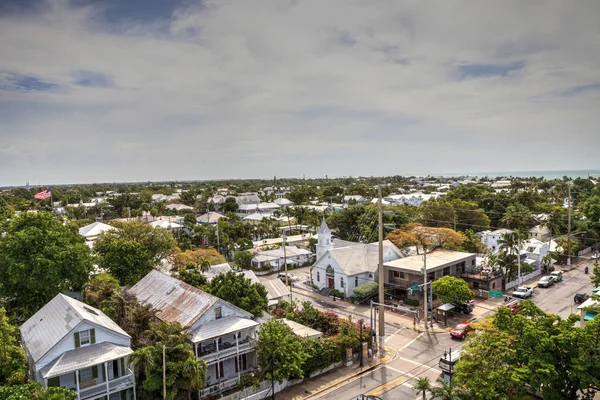
This medieval pilgrimage village in Aveyron appears to tumble down a hillside like scattered amber stones, its golden sandstone buildings creating a warm glow that changes throughout the day. The village revolves around its magnificent abbey church, whose carved tympanum depicts the Last Judgment with intricate detail that medieval pilgrims would study for hours.
Modern visitors often discover that Conques feels more like an outdoor museum than a tourist destination, with its narrow streets unchanged since the Middle Ages.
Beuvron-en-Auge
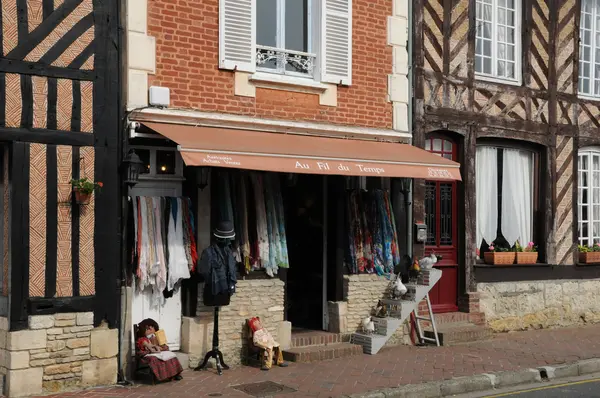
Half-timbered houses painted in cheerful colors line the main square of this Norman village, creating a scene that looks like it escaped from a children’s storybook. Apple orchards surround the village, supplying local cideries that produce some of Normandy’s finest apple brandy and sparkling cider.
The Friday market brings farmers from surrounding areas who sell everything from fresh oysters to aged Camembert, creating a weekly celebration of Norman gastronomy.
Like Travel Pug’s content? Follow us on MSN.
Gerberoy
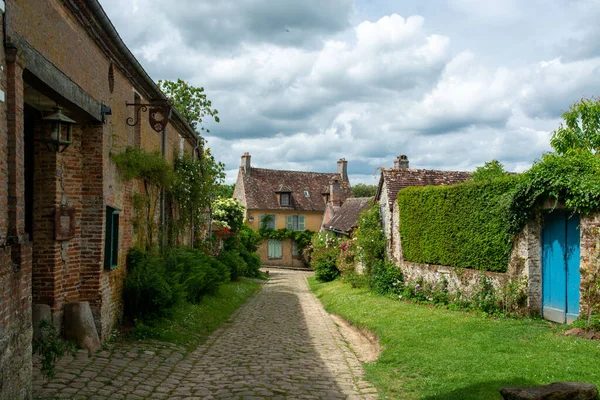
Roses climb every available surface in this tiny Picardy village, transforming humble brick and timber houses into fairy-tale cottages during blooming season. The village gained fame among Impressionist painters who came to capture the interplay of light filtering through rose petals and ancient architectural details.
Today, fewer than 100 residents maintain this floral paradise, opening their gardens to visitors during the annual rose festival each June.
Sainte-Enimie
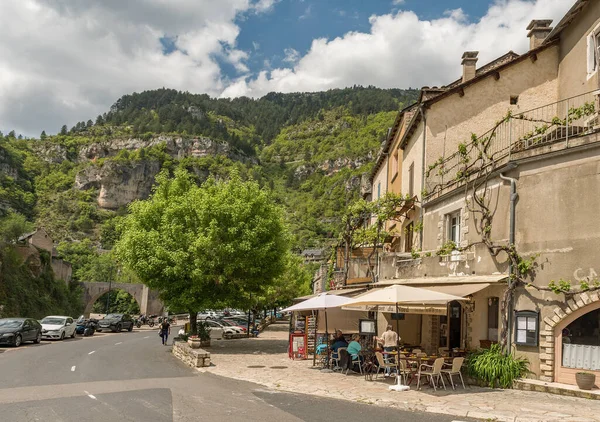
Carved into limestone cliffs above the Tarn River, this village appears to grow directly from the rock face, resembling a natural geological formation. Stone houses with slate roofs cascade down terraced levels, connected by steep staircases that reward climbers with panoramic views of the river gorge below.
The village serves as a gateway to the Tarn Gorges, where kayakers and hikers explore some of France’s most dramatic canyon landscapes.
Collonges-la-Rouge

Every building in this Corrèze village glows with the same distinctive red sandstone, creating a monochromatic architectural harmony that photographers dream about. The stone’s color shifts from deep burgundy in morning shadows to bright coral in afternoon sunlight, making the village appear to change personality throughout the day.
Local artisans still work with this unique stone, maintaining building techniques that date back to the 16th century when wealthy merchants first established the village.
Like Travel Pug’s content? Follow us on MSN.
Locronan
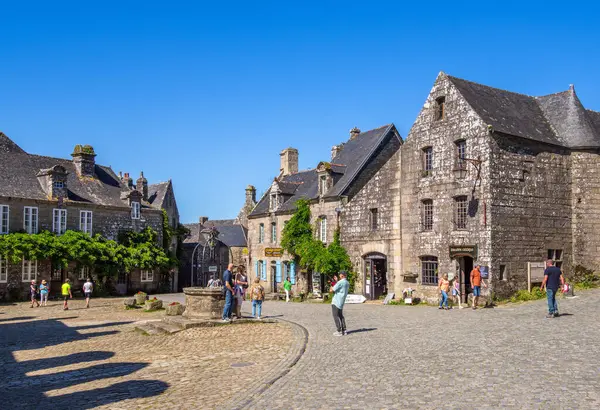
Granite buildings surround a perfectly preserved Renaissance square where weavers once produced sailcloth for the French navy. This Breton village maintains such an authentic period atmosphere that film crews regularly use it as a backdrop for historical movies set in medieval or Renaissance France.
The surrounding countryside offers hiking trails that lead to ancient Celtic sacred sites, blending Christian architecture with much older spiritual traditions.
Monpazier
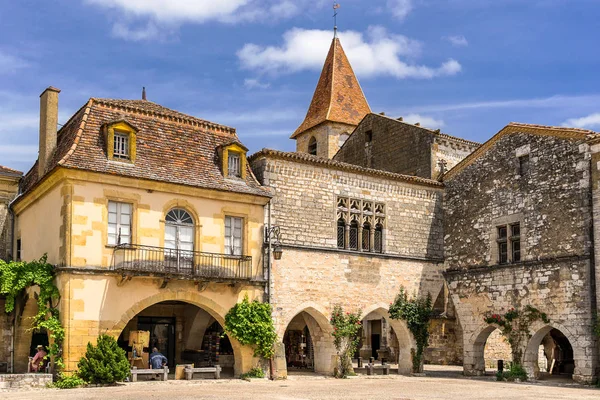
English and French forces designed this 13th-century bastide town with mathematical precision, creating a grid pattern of streets that demonstrates medieval urban planning at its finest. The central market square, surrounded by arcaded buildings, still hosts weekly markets where local farmers sell products from the surrounding Dordogne countryside.
Walking through Monpazier feels like touring an architectural textbook, with each building reflecting a different era of French architectural technique.
Cordes-sur-Ciel
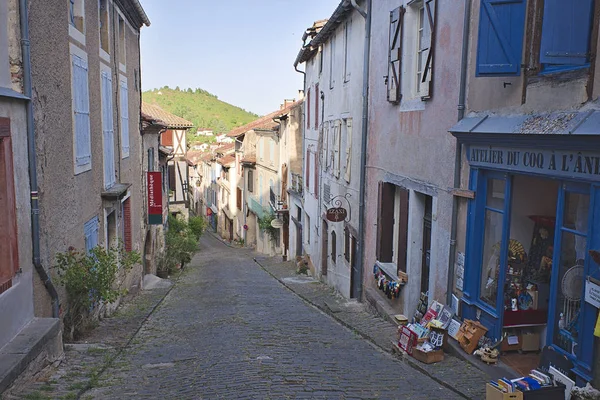
Perched on a hilltop that often rises above morning fog clouds, this village lives up to its name of ‘heaven.’ Gothic houses with intricate stone facades line narrow streets that wind upward toward the village summit, where panoramic views stretch across the Tarn valley.
Local artists have established studios in medieval buildings, creating a contemporary creative community within ancient walls.
Like Travel Pug’s content? Follow us on MSN.
Auvillar

This circular village crowns a hill overlooking the Garonne River, its market square featuring a unique round corn exchange building that demonstrates the area’s agricultural heritage. Traditional brick and timber houses painted in warm earth tones create a harmonious color palette that complements the surrounding Gascony landscape.
The village specializes in traditional pottery and quill pen production, maintaining crafts that most other French communities have abandoned.
Angles-sur-l’Anglin
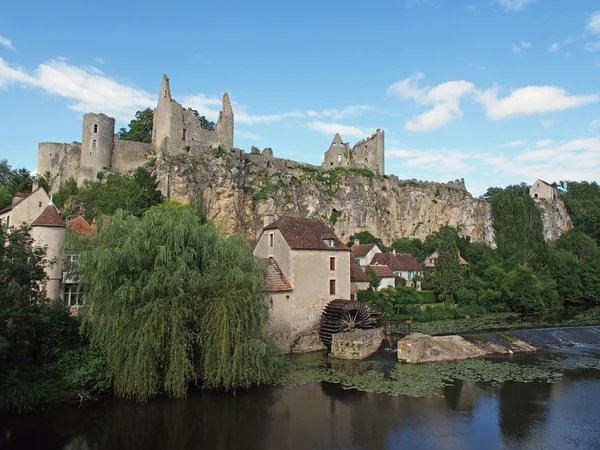
Ruined castle walls crown the cliffs above this village, where ancient fortifications overlook the Anglin River valley and water mills that still grind grain using medieval techniques. Stone houses with slate roofs cluster around narrow streets where residents maintain gardens filled with vegetables and flowers.
The village earned recognition for its prehistoric cave art, adding archaeological significance to its architectural charms.
Balazuc
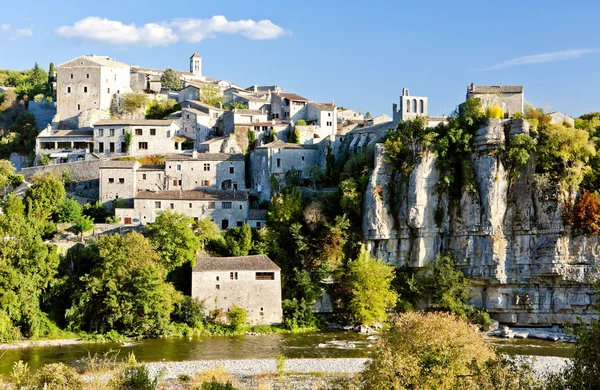
Golden limestone buildings cling to cliffs above the Ardèche River, creating a vertical village that seems to defy gravity with its terraced construction. Medieval streets too narrow for cars wind between houses where families have lived for generations, maintaining traditions like silk production that once made the village prosperous.
Swimming and canoeing opportunities in the clear river below provide modern recreation within an ancient setting.
Like Travel Pug’s content? Follow us on MSN.
Lavardin
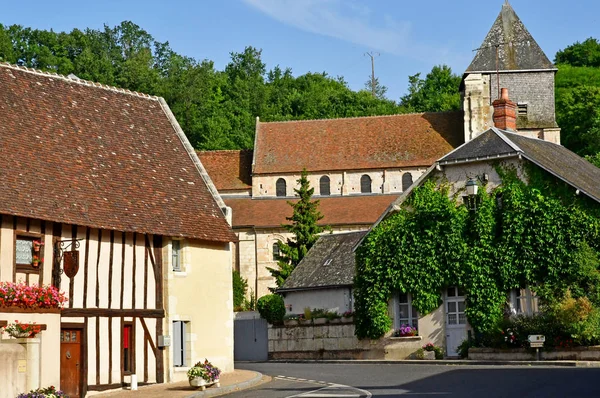
Massive castle ruins dominate this Loire Valley village, where troglodyte dwellings carved directly into limestone cliffs house residents who enjoy unique underground living spaces. The village church contains some of France’s best-preserved Romanesque frescoes, their colors still vibrant after nearly a thousand years.
Vineyard terraces climb the surrounding hillsides, producing wines that rarely travel beyond the immediate region.
Curemonte
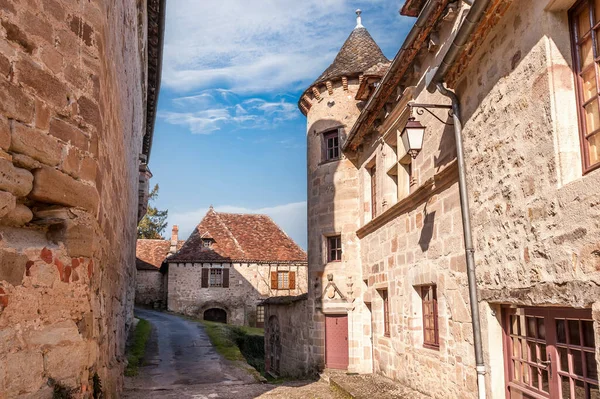
Three distinct castles overlook this tiny Corrèze village, where noble families once competed to build the most impressive fortress within sight of their rivals. Traditional limestone houses with steep-pitched roofs cluster around the village church, creating an architectural ensemble that illustrates centuries of local building traditions.
The surrounding countryside offers hiking trails through oak forests where truffle hunters search for black diamonds during the autumn months.
Najac
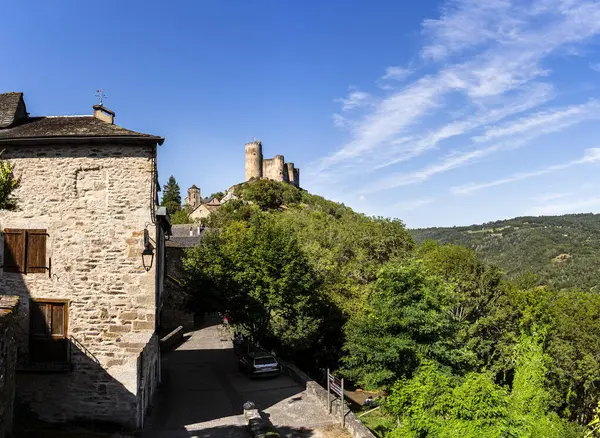
A single street spirals up to a dramatic castle perched on a rocky spur, making this Aveyron village look like a medieval town planner’s dream come true. Stone houses with red tile roofs line the ascending street, many featuring traditional covered balconies that provide shade during hot summer afternoons.
The castle at the summit offers commanding views across the Aveyron valley, explaining why strategic-minded medieval lords chose this location for their stronghold.
Like Travel Pug’s content? Follow us on MSN.
Belcastel
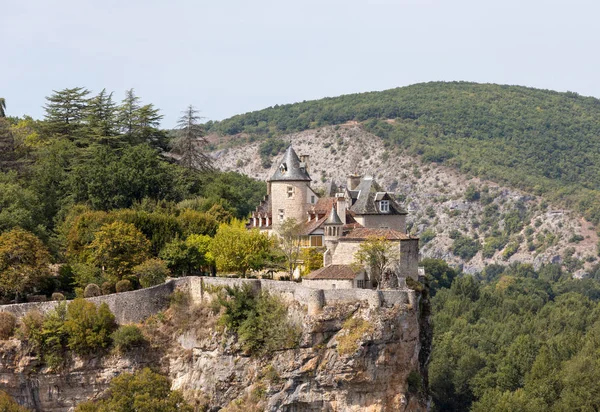
This Aveyron village centers around a perfectly restored 15th-century castle that seems to grow from the rocky outcrop above the river. Stone bridges and traditional architecture create reflections in the calm water below, producing picture-perfect scenes that change with lighting conditions throughout the day.
Local artisans specialize in traditional ironwork and stone carving, skills that prove essential for maintaining the village’s historic buildings.
Turenne

Viscounts once ruled vast territories from this hilltop village, where tower ruins mark the site of a castle that controlled trade routes through the Corrèze region. Traditional limestone houses with brown tile roofs create a warm color palette that harmonizes with the surrounding countryside of walnut groves and meadows.
The village maintains a working blacksmith shop where visitors can watch traditional metalworking techniques that date back centuries.
Montsoreau
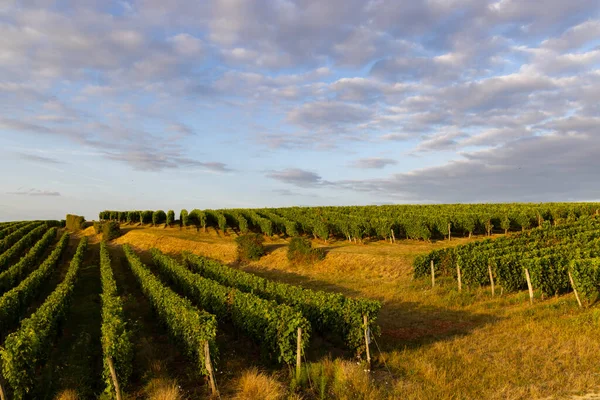
White limestone buildings reflect in the Loire River, creating a village that seems to float between water and sky during certain lighting conditions. This Maine-et-Loire community gained literary fame as the setting for Alexandre Dumas’ novel ‘La Dame de Monsoreau,’ though its real charm lies in the harmony between architecture and natural landscape.
Local vintners produce unique wines from grapes grown in limestone caves carved into the riverbank cliffs.
Like Travel Pug’s content? Follow us on MSN.
Gargilesse-Dampierre
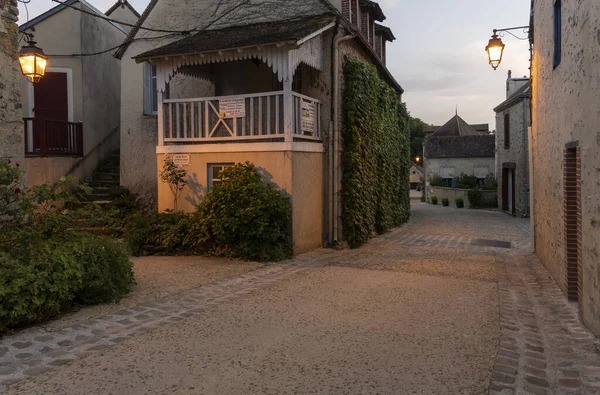
Writer George Sand made this Indre valley village famous among 19th-century artists and intellectuals who came to experience its peaceful atmosphere and inspiring natural beauty. Traditional Berry region architecture features houses built from local limestone with distinctive steep roofs designed to shed snow and rain efficiently.
The surrounding countryside offers gentle hiking trails along the Gargilesse River, where water mills and ancient bridges create scenic stopping points.
Estaing
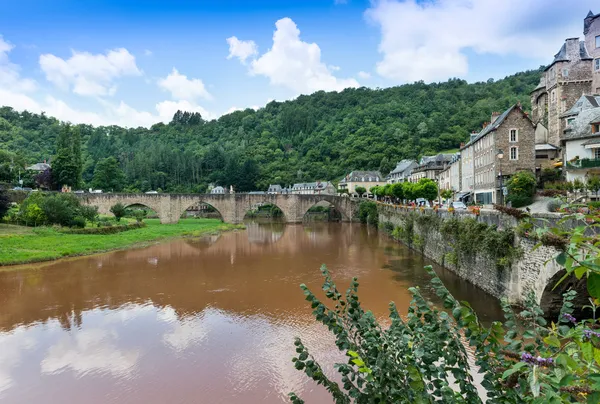
A Gothic bridge spans the Lot River to reach this Aveyron village, where a Renaissance castle overlooks traditional houses that seem unchanged since medieval times. The village maintains its role as a pilgrimage stop on the Santiago de Compostela route, welcoming modern pilgrims who follow the same path that medieval travelers used centuries ago.
Local shepherds still practice transhumance, moving sheep flocks between seasonal pastures according to traditions that predate written history.
Minerve
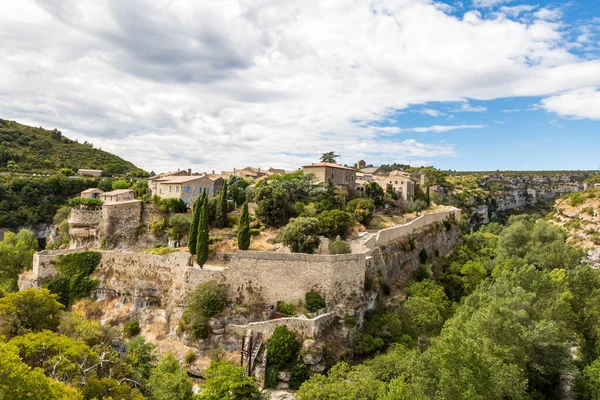
Dramatic limestone gorges surround this Languedoc village, where ancient fortifications crown a rocky promontory that provided natural defense during the Cathar period. Stone houses built from local limestone blend seamlessly with the rocky landscape, creating architecture that appears to emerge organically from the earth itself.
Underground caves and natural rock arches add to the geological wonder and historical significance of this remarkably preserved medieval stronghold.
Like Travel Pug’s content? Follow us on MSN.
Where Stones Remember Stories
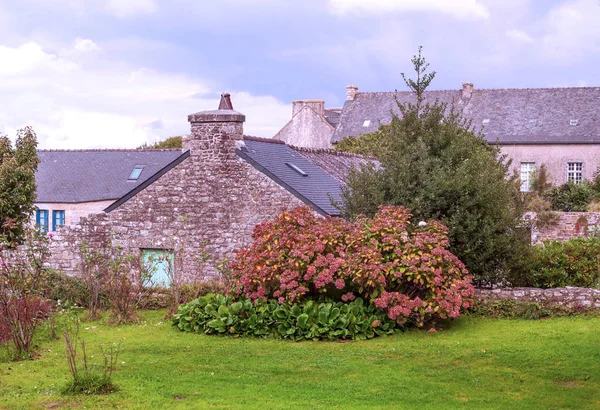
These hidden villages represent more than just pretty places frozen in time – they embody living connections between France’s medieval past and its contemporary rural identity. While modern France embraces high-speed trains and digital technology, these communities maintain traditional crafts, agricultural practices, and social rhythms that provide continuity with centuries of human experience.
Each village tells a unique story about how French culture adapted to specific landscapes, ranging from Alpine valleys to river gorges and hilltop plateaus, creating architectural and social solutions that remain effective today. The greatest treasure these villages offer isn’t their photogenic qualities, but their demonstration that authentic community life can thrive when people choose to honor both heritage and innovation in equal measure.
More from Travel Pug

- 20 Best Beach Towns in the Carolinas
- 13 Destinations Where Tourists Regularly Regret Their Trip
- 20 Destinations That Are More Magical Without an Itinerary
- 20 Underrated Adventures That Belong on Your Travel List
- 20 Cities Where You Should Just Wing It, No Planning Required
Like Travel Pug’s content? Follow us on MSN.w us on MSN.N.
